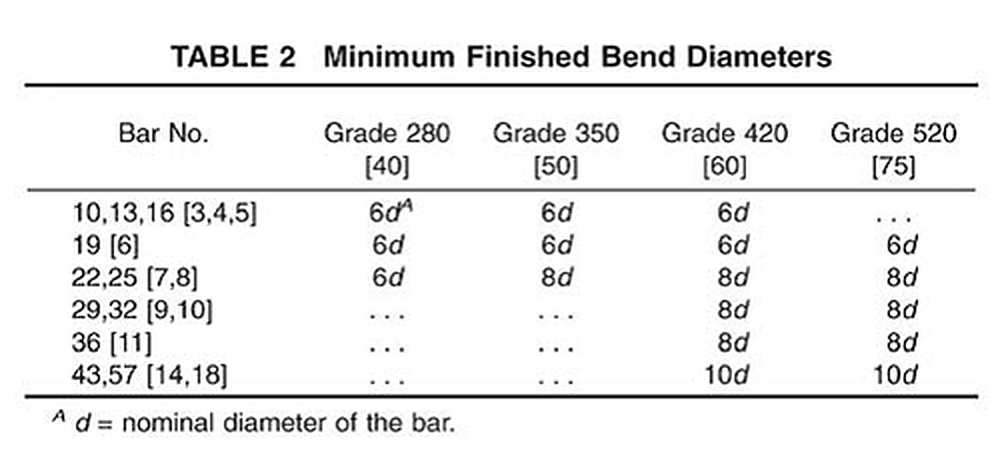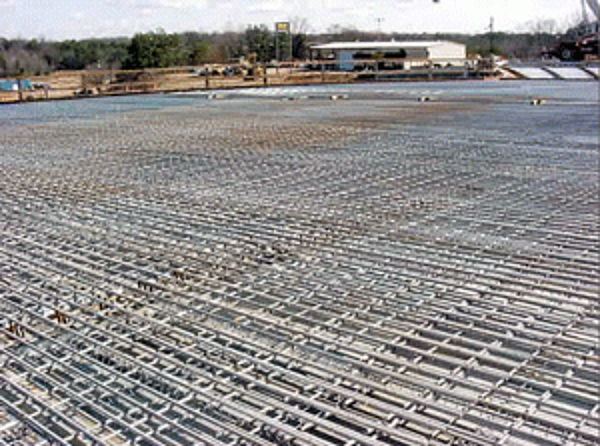Recomended Bend Diameters
Is the recommended bend diameter the same for reinforcing bar as it is for other types of steel?
The simple answer is no, the recommended bend diameter prior to galvanizing is not the same for reinforcing bar as it is for other types of steel. Lets explore this answer in more detail though.
Why Are Bend Recommendations Necessary?
When metal is bent while it is cold (temperatures a few hundred degrees and below) stresses are introduced into the steel. When the steel is heated to the temperature of the galvanizing kettle, the change in temperature can affect the areas with the increased stress from cold working. It is possible if the stresses from the cold working are excessive, strain-age embrittlement can occur. Strain-age embrittlement is defined as an increase of hardness and strength of the steel in the areas that have been stressed by cold working with a corresponding decrease in ductility in those areas. Strain-age embrittlement occurs slowly at room temperature and increases rapidly when exposed to the temperature of the galvanizing kettle. Bend recommendations serve to limit the amount of stress induced into the steel during cold working to decrease the chances for stain-age embrittlement. The bend recommendations are different for reinforcing bar as compared to other types of steel, however.

What Are The Bend Recommendations?
ASTM A143/A 143M recommends a bend diameter of at least three times (3X) the steel diameter for intermediate and heavy shapes, plates, and hardware. This recommendation does not apply to reinforcing bar. Recommended bend diameters for rebar are included in ASTM A767/A767M and are shown in the table below. Reinforcing bar and other types of steel can be bent tighter than these recommendations if necessary though as long as the steel is annealed prior to galvanizing or formed while hot. If tighter bend diameters than recommended are used and the steel is bent cold, the steel must be stress-relieved by heating the steel to temperatures between 900 to 1050°F (482 to 566°C) for one hour per inch of steel diameter prior to galvanizing.
Why Are The Bend Recommendations Different For Reinforcing Bar?

Different types of steel have different properties, including chemistry, strength, aging characteristics, etc., and these properties will influence the cold working properties of the steel. Because most black steel reinforcing bar is made primarily of scrap iron and has many different steel chemistries, different bend recommendations are necessary. This is because of the varying properties of the steel with varying chemistries.
© 2025 American Galvanizers Association. The material provided herein has been developed to provide accurate and authoritative information about after-fabrication hot-dip galvanized steel. This material provides general information only and is not intended as a substitute for competent professional examination and verification as to suitability and applicability. The information provided herein is not intended as a representation or warranty on the part of the AGA. Anyone making use of this information assumes all liability arising from such use.

